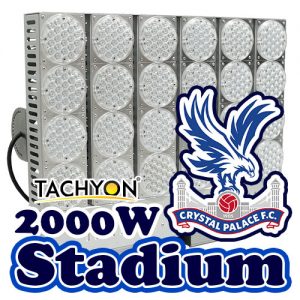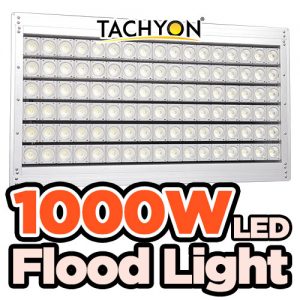Common LED light Source Driver IC
At present, common LED light source driver ICs are borrowed from general-purpose power supply ICs, and few driver ICs are really designed for LED light sources. A lot of companies are in the works, and expect to see quite a few of them coming to market by mid-2023.
At present, the low-cost and unsafe solution of LED light source driving is realized by the method of resistance-capacitance step-down, such as the previous Christmas lighting. Low-cost drivers can also use CCR and LDO, their driving current is not large. CCR can only drive LEDs below 0.5W and straw hat lamps with 0.06W. LDO can drive 1W LED with voltage regulation, but it is not good for the life of LED light source. DC/DC→constant current source may be one of the most ideal solutions known at present.
**DC/DC constant current source driver IC
The DC/DC constant current source driver IC directly provides constant DC power for the LED light source. The most used is to use DC/DC-Buck as a step-down constant current source. The step-down constant current source is like taking water from a large reservoir, so the constant current characteristic is stable and the supply capacity is strong. Using DC/DC-Boost as a boost-type constant current source is like lifting water from a canal, and the output voltage can be higher than the input voltage. If the output current is required to be larger, current expansion is required.
Main indicators of constant current source IC
LED light sources are often used in series and parallel applications to improve the brightness of lamps. Due to the discrete nature of LED light sources, multiple series applications are more reasonable than parallel applications, which can reduce the requirements for the consistency of LED light sources.
Using DC/DC-Buck as a step-down constant current source, the total voltage required after multiple LED light sources are connected in series cannot be higher than the input voltage of the DC/DC-Buck, and it is ideal to be 2V lower. At this time, the efficiency of the constant current source can be greater than 90%. For this reason, some main indicators of the new generation of DC/DC-Buck constant current source IC will be qualitatively improved. Vin=5-70V, even Vin=5-100V, such chips can meet the basic conditions of automotive electronic applications, and the output voltage can also meet the requirements of stringing close to 20-30 LED light sources. The key to increasing the voltage of Vin is the manufacturing process of the integrated circuit.
The output constant current accuracy is also an important indicator worthy of attention, which is related to the consistency of the constant current drive power supply in mass industrial production.
Constant current output accuracy
If the output current of the constant current drive power supply is inconsistent due to the different constant current precision output by the DC/DC-Buck constant current source IC, it will affect the difference in brightness of the LED lamps produced in batches.
Therefore, the constant current output accuracy of the new generation DC/DC-Buck constant current source IC is required to be 2% – 1%. 
Over-current, over-voltage, over-temperature, and open-circuit protection are necessary for this type of IC. Switching frequency dithering technology can effectively reduce the EMI of the application circuit, so it will be more and more used. The built-in MOSFET should not be too large. One is to consider the cost of the chip, and the other is to consider the heat dissipation of the chip itself during operation. Generally, the output current of a single chip is below 2A.
In addition, since 750mA to 1500mA of current flows during operation, such as passing these currents for a long time on a silicon die like 1.4 X 1.1mm, there must be power consumption and heat. The physical heat dissipation structure of the chip itself is also crucial, and the package of the driver chip should be conducive to the rapid heat dissipation of the driver chip die. For example, the die (Die) is directly bound to the copper plate, and a Pin extends directly to the outside of the package, which is convenient for direct welding on the copper foil of the PCB board to quickly conduct heat and dissipate.
The high degree of functional integration of the DC/DC constant current source driver IC is the key to simplifying the application circuit. For example, the BP1360/1 only needs five components in the application, which greatly saves the application cost.
AC/DC Constant Current Source Driver IC
Development ideas (1)
Lighting fixtures that use AC power directly on the lamp head need an AC/DC constant current source driver IC with a simple application circuit and low cost. Most of the driving ICs currently used are flyback constant current driving solutions converted from switching power supplies, using the principle of isolation and step-down. It is divided into two types of applications: primary side feedback control and secondary side feedback control.
The accuracy of the secondary-side feedback control system can reach 2%, but the entire application circuit requires about twenty components. The accuracy of the primary-side feedback control system can generally reach 5-3%, and the entire circuit requires only 7-8 components at least. LED lighting manufacturers are very cost-conscious.
At present, the AC/DC constant current source driver IC is changing from a flyback topology to a high-efficiency resonant half-bridge (LLC) + PFC topology, in order to give full play to the advantages of the zero voltage switching topology (ZVS) and meet the requirements of LED lamps for PFC ( power factor correction) increasing requirements and requiring >90% efficiency improvement at lower power levels (eg <50 W). Wide voltage input, short-circuit and over-power protection, open-circuit protection, and low total harmonic distortion (THD) are basic requirements.
The application of AC/DC constant current source driver IC and thyristor dimmer is also the current mainstream application. There is considerable demand for guest industry and home lighting and is also a developing branch. The new development is to adapt to isolated AC/DC off-line 100VAC / 230VAC applications, suitable for front-cut dimmers and back-cut dimmers. There is a wide dimming range that can be increased from 2% to 100%, and resonance control is used to obtain high efficiency of 85% and meet harmonic requirements. Power factor of 0.9 without dimmer.
Development ideas (2)
Another development idea of AC/DC constant current source driver IC is to form a new driver IC by two average current mode controllers of power factor correction (PFC) and pulse width regulation (PWM). Multiplier technology, can obtain higher power factor and lower total harmonic distortion (THD). PWM can choose to use current mode control or voltage mode control.
PFC regulation is rising edge modulation, while PWM uses falling edge modulation. Because the modulation with different triggers can reduce the ripple voltage on the PFC output capacitor. Adding programmable two-stage PFC output function can improve system efficiency at low voltage input and light load. Multiple protection functions are added, including soft-start of PWM and PFC, PFC over-voltage/under-voltage, cycle-by-cycle current limit, PFC input under-voltage, etc.
The PFC part works in continuous current mode, which can help reduce the rate of change of the boost inductor current, which is suitable for higher power applications. The gain regulator can provide high power factor and low total harmonic distortion for the power supply and is the core of the PFC stage. The current loop can respond to different input voltage, frequency, rms voltage and PFC output voltage. The function of the gain regulator is to generate a control signal to the PFC stage to control its duty cycle to keep the output voltage stable. The inverse of the square of VRMS provides constant power for both high and low voltages.
For AC/DC constant current drive source, conduction and radiation are very important parameters related to whether LED lighting products can pass CE and UL certification. Therefore, conducted EMI results must be tested according to EN55015 B standard under 230 VAC input conditions.





